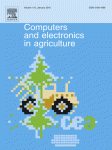Ver ítem
- xmlui.general.dspace_homeCentros Regionales y EEAsCentro Regional Buenos Aires SurEEA BalcarceArtículos científicosxmlui.ArtifactBrowser.ItemViewer.trail
- Inicio
- Centros Regionales y EEAs
- Centro Regional Buenos Aires Sur
- EEA Balcarce
- Artículos científicos
- Ver ítem
Delineation of management zones with soil apparent electrical conductivity to improve nutrient management
Resumen
Site-specific management demands the identification of subfield regions with homogeneous characteristics (management zones). However, determining subfield areas is difficult because of complex correlations and the spatial variability of soil properties and nutrient concentrations, responsible for variations in crop yields within the field. We evaluated whether apparent electrical conductivity (ECa) is a potential estimator of soil properties and
[ver mas...]
Site-specific management demands the identification of subfield regions with homogeneous characteristics (management zones). However, determining subfield areas is difficult because of complex correlations and the spatial variability of soil properties and nutrient concentrations, responsible for variations in crop yields within the field. We evaluated whether apparent electrical conductivity (ECa) is a potential estimator of soil properties and nutrients, and a tool for the delimitation of homogeneous zones. Two field sites with several soil series were studied in southeastern Cordoba Province, Argentina. Soil properties and nutrient concentrations were compared with ECa using principal components (PC)- stepwise regression and ANOVA. The PC-stepwise regression showed that soil properties (pH, EC1:2.5, CEC, SOM) and nutrients (Na+2, Mg+2, Mn+2, Cu+2, Ca+2, Zn+2, Fe+2) are key loading factors to explain the ECa (R2 > 0.90). In contrast, K+, P, and ), content were not able to explain the ECa. The ANOVA showed that ECa measurements successfully delimited two homogeneous soil zones associated with the spatial distribution of soil properties and some nutrients (Na+2, Mg+2, Mn+2, Cu+2, Ca+2, Zn+2, Fe+2). These results suggest that field-scale ECa maps have the potential to design sampling zones to implement site-specific management strategies.
[Cerrar]

Autor
Peralta, Nahuel Raúl;
Costa, Jose Luis;
Fuente
Computers and Electronics in Agriculture 99 : 218-226 (November 2013)
Fecha
2013-11
Editorial
Elsevier
ISSN
0168-1699
Formato
pdf
Tipo de documento
artículo
Palabras Claves
Derechos de acceso
Abierto
 Excepto donde se diga explicitamente, este item se publica bajo la siguiente descripción: Creative Commons Attribution-NonCommercial-ShareAlike 2.5 Unported (CC BY-NC-SA 2.5)
Excepto donde se diga explicitamente, este item se publica bajo la siguiente descripción: Creative Commons Attribution-NonCommercial-ShareAlike 2.5 Unported (CC BY-NC-SA 2.5)


